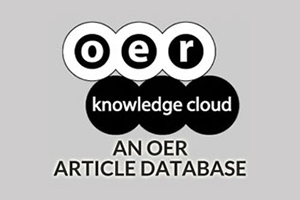Contextualizing E-Learning Experiences With Indigenous Communities: A Practical, Research-Based Approach
DOI:
https://doi.org/10.19173/irrodl.v26i2.7830Keywords:
digital learning, contextualized learning, e-learning, Indigenous educationAbstract
During the COVID-19 pandemic, more than 300,000 students in Peru dropped out of the school system. Most of the students were rural Indigenous students. A lack of infrastructure and connectivity, as well as a lack of contextualized and appropriate educational resources, made it virtually impossible for rural students to engage in formal learning. The pandemic has made clear the need and viability for distributed e-learning in rural communities. However, creating e-learning content that is contextualized to support vulnerable students’ learning has been a challenge. Little to no research has discussed how to contextualize e-learning to address both its promises and challenges. In this research note, we discuss an initiative to bring together advances in contextualized learning and e-learning to address problems with access to quality materials and curriculum in rural Peruvian schools. We highlight how interdisciplinary collaborations can support innovations and improve educational access for low-income students from remote regions through distributed learning. While research have found significant promise in contextualized education, the processes of engaging in contextualized digital learning and in low-income communities have proven difficult to implement. We discuss the concepts, research base, processes, and technology required to address these needs, as well as the curricular and pedagogical approach we take in this initiative.
References
Amineh, R. J., & Asl, H. D. (2015). Review of constructivism and social constructivism. Journal of Social Sciences, Literature and Languages, 1(1), 9–16.
Berns, R. G., & Erickson, P. M. (2001). Contextual teaching and learning: Preparing students for the new economy. The Highlight Zone: Research @ Work, 5, 2–9. http://files.eric.ed.gov/fulltext/ED452376.pdf
Brasof, M., & Levitan, J. (Eds.). (2022). Student voice research: Theory, methods, and innovations from the field. Teachers College Press. https://eric.ed.gov/?id=ED623849
Brydon-Miller, M., Kral, M., & Ortiz Aragón, A. (2020). Participatory action research: International perspectives and practices. International Review of Qualitative Research, 13(2), 103–111. https://journals.sagepub.com/doi/full/10.1177/1940844720933225
Castagno, A. E., & Brayboy, B. M. J. (2008). Culturally responsive schooling for Indigenous youth: A review of the literature. Review of Educational Research, 78(4), 941–993. https://doi.org/10.3102/0034654308323036
Cote-Meek, S., & Moeke-Pickering, T. (2020). Decolonizing and indigenizing education in Canada. Canadian Scholars Press. https://www.canadianscholars.ca/books/decolonizing-and-indigenizing-education-in-canada
Cueto, S., Balarin, M., Saavedra, M., & Sugimaru, C. (2023). Ed-tech in the Global South: Research gaps and opportunities. (Occasional paper no. 91). Southern Voice. https://southernvoice.org/wp-content/uploads/2023/11/Ed-tech-Global-South-Cueto-et-al.-2023.pdf
Dewey, J. (1997). Experience and education (Reprint edition). New York: Touchstone. https://openlibrary.org/books/OL15492565M/Experience_and_education
Espinal-Meza, S. (2024). Critical pedagogies for reappraising Indigenous knowledge and diversity in rural Peru: The voices of two rural teachers. Australian and International Journal of Rural Education, 34(2), 71–86.
García, M. E. (2003). The politics of community: Education, indigenous rights, and ethnic mobilization in Peru. Latin American Perspectives, 30(1), 70–95.
García, M. E. (2005). Making indigenous citizens: Identities, education, and multicultural development in Peru. Stanford University Press.
Haßler, B., Major, L., & Hennessy, S. (2016). Tablet use in schools: A critical review of the evidence for learning outcomes. Journal of Computer Assisted Learning, 32(2), 139-156. https://doi.org/10.1111/jcal.12123
Haerazi, H., Prayati, Z., & Vikasari, R. M. (2019). Practicing contextual teaching and learning (CLT) approach to improve students’ reading comprehension in relation to motivation. English Review: Journal of English Education, 8(1), 139–146. https://journal.uniku.ac.id/index.php/ERJEE/article/view/2011
Hynsjö, D., & Damon, A. (2016). Bilingual education in Peru: Evidence on how Quechua-medium education affects indigenous children’s academic achievement. Economics of Education Review, 53, 116–132.
Johnson, K. M. & Levitan, J. (2021). Learning on the mountain: Illuminating educational inequities during COVID-19 in Peru to develop community-informed policy, NORRAG Special Issue 06, 22-25. https://www.researchgate.net/publication/356082922_Learning_on_the_Mountain_COVID-19_Educational_Inequities_and_Community-Informed_Policy_in_Peru
Johnson, K. M., & Levitan, J. (2022). Rural indigenous students in Peruvian Urban higher education: interweaving ecological systems of coloniality, community, barriers, and opportunities. Diaspora, Indigenous, and Minority Education, 16(1), 21-42. https://doi.org/10.1080/15595692.2021.1974383
Ladson‐Billings, G. (1995). But that’s just good teaching! The case for culturally relevant pedagogy. Theory Into Practice, 34(3), 159–165. https://doi.org/10.1080/00405849509543675
Levitan, J., & Post, D. (2017). Indigenous student learning outcomes and education policies in Peru and Ecuador. Indigenous education policy, equity, and intercultural understanding in Latin America, 27-49. https://doi.org/10.1057/978-1-137-59532-4_2
Levitan, J. (2018). The danger of a single theory: Understanding students’ voices and social justice in the Peruvian Andes. Teachers College Record, 120(2), 1-36. https://doi.org/10.1177/016146811812000208
Levitan, J., & Johnson, K. M. (2020). Salir adelante: Collaboratively developing culturally grounded curriculum with marginalized communities. American Journal of Education, 126(2), 195-230. https://doi.org/10.1086/706921
Meza Lovon, G. L. (2023, July 30). La brecha digital del Perú: Remedios que no la cierran [The digital gap in Peru: Treatments that do not close it]. Departamento de Ciencia de la Computación de la Universidad Católica San Pablo. https://ucsp.edu.pe/brecha-digital-peru-remedios-que-no-la-cierran/
MINEDU. (2016, June 2). Currículo nacional de la educación básica [National curriculum for basic education]. http://www.minedu.gob.pe/curriculo/pdf/curriculo-nacional-de-la-educacion-basica.pdf
MINEDU. (2021). Lineamientos para la diversificación curricular en la educación básica [Guidelines for diversifying the basic education curriculum]. https://cdn.www.gob.pe/uploads/document/file/2014807/RVM%20N%C2%B0%20222-2021-MINEDU.pdf.pdf
MINEDU. (2022). Guía docente para la planificación curricular de las experiencias de aprendizaje [Teaching guide for curriculum planning and the learning experience]. https://hdl.handle.net/20.500.12799/7813
OECD. (2023). PISA 2022 results (Volume I): The state of learning and equity in education. https://doi.org/10.1787/53f23881-en
O’Sullivan, M. (2006). Lesson observation and quality in primary education as contextual teaching and learning processes. International Journal of Educational Development, 26(3), 246–260. http://dx.doi.org/10.1016/j.ijedudev.2005.07.016
Paris, D. (2012). Culturally sustaining pedagogy: A needed change in stance, terminology, and practice. Educational Researcher, 41(3), 93–97. https://doi.org/10.3102/0013189X12441244
Rodriguez Paredes, N. P., Duran Llaro, K. L., & Marquez Yauri, H. Y. (2023). Peruvian National Strategy for Educational Reinsertion and Continuity: An Analysis of Post-Pandemic School Dropout Reduction. Migration Letters, 20(4), 1357-1378. https://repositorio.ucv.edu.pe/handle/20.500.12692/145313
Sumida Huaman, E. A. (2013). Conversations on Indigenous education, progress, and social justice in Peru. International Journal of Multicultural Education, 15(3), 10–25. https://eric.ed.gov/?id=EJ1105091
Sumida Huaman, E. A. (2020). Small Indigenous schools: Indigenous resurgence and education in the Americas. Anthropology & Education Quarterly, 51(3), 262–281. https://doi.org/10.1111/aeq.12335
Suryawati, E., Osman, K., & Meerah, T. S. M. (2010). The effectiveness of RANGKA contextual teaching and learning on students’ problem solving skills and scientific attitude. Procedia-Social and Behavioral Sciences, 9, 1717–1721. https://doi.org/10.1016/j.sbspro.2010.12.389
Tabibnia, G., & Lieberman, M. D. (2007). Fairness and cooperation are rewarding: Evidence from social cognitive neuroscience. Annals of the New York Academy of Sciences, 1118(1), 90–101. https://doi.org/10.1196/annals.1412.001
Tamur, M., Jehadus, E., Nendi, F., Mandur, K., & Murni, V. (2020). Assessing the effectiveness of the contextual teaching and learning model on students’ mathematical understanding ability: A meta-analysis study. Journal of Physics: Conference Series, 1657(1), 1–8. https://www.doi.org/10.1088/1742-6596/1657/1/012067
The Indigenous World. (2024). The Indigenous World 2024 - 38th Edition. International Work Group for Indigenous Affairs. https://iwgia.org/en/resources/publications/5508-the-indigenous-world-2024.html
UNESCO. (2023). Global education monitoring report 2023: Technology in education – A tool on whose terms? https://doi.org/10.54676/UZQV8501
Zavala, V. (2014). What is Quechua literacy for? Ideological dilemmas in intercultural bilingual education in the Peruvian Andes. In M. Prinsloo & C. Stroud (Eds.), Educating for language and literacy diversity: Mobile selves (pp. 45–72). Palgrave Macmillan UK.
Published
How to Cite
Issue
Section
License

This work is licensed under a Creative Commons Attribution 4.0 International License.
This work is licensed under a Creative Commons Attribution 4.0 International License. The copyright for all content published in IRRODL remains with the authors.
This copyright agreement and usage license ensure that the article is distributed as widely as possible and can be included in any scientific or scholarly archive.
You are free to
- Share — copy and redistribute the material in any medium or format
- Adapt — remix, transform, and build upon the material for any purpose, even commercially.
The licensor cannot revoke these freedoms as long as you follow the license terms below:
- Attribution — You must give appropriate credit, provide a link to the license, and indicate if changes were made. You may do so in any reasonable manner, but not in any way that suggests the licensor endorses you or your use.
- No additional restrictions — You may not apply legal terms or technological measures that legally restrict others from doing anything the license permits.







